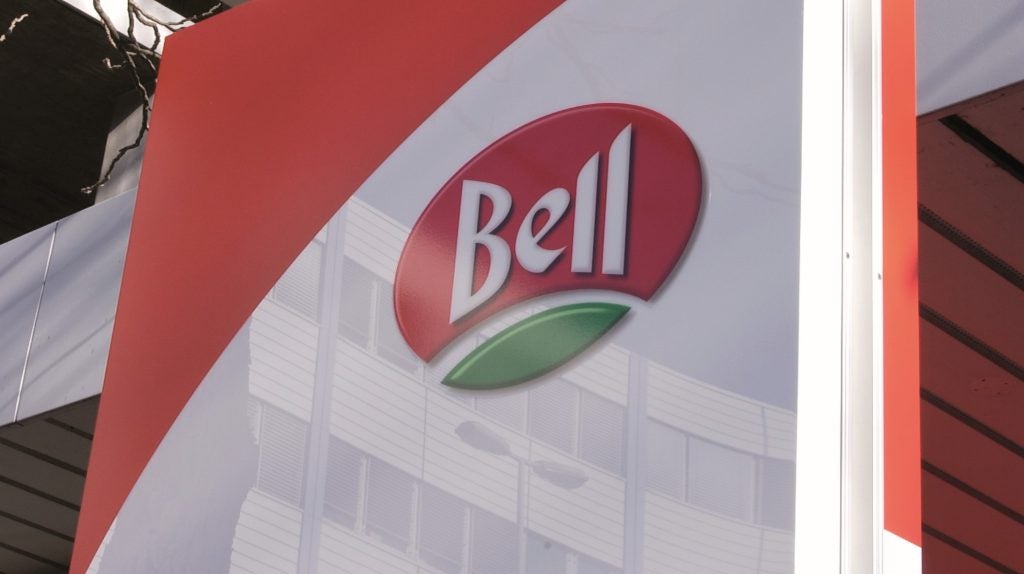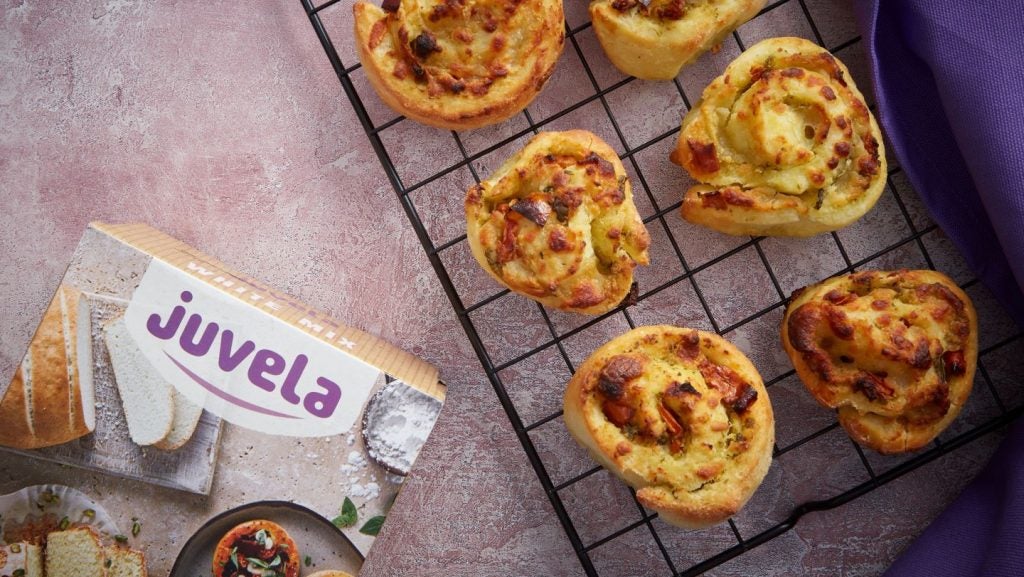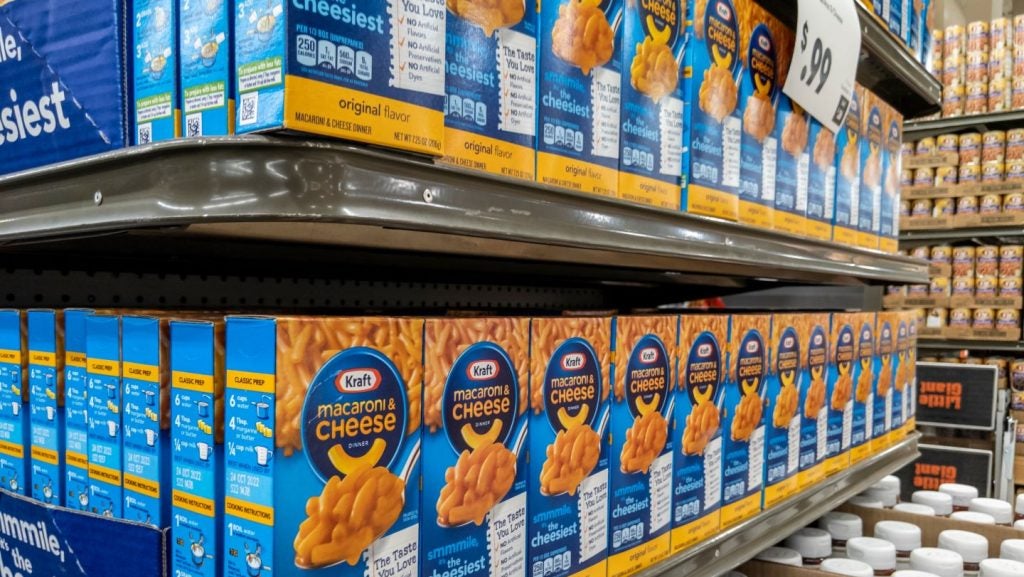The spotlight fell on Kraft’s North American grocery unit this week, when the firm released some details on the shape the business will take after it is spun-off from the group’s international snacks division later this year. Katy Askew reports.
In August last year Kraft Foods announced that it would spit into two businesses: an international snacks business, to be called Mondelez International, and a North American grocery business, which will retain the Kraft name.
The rationale, Kraft management insisted, was that the move would allow the group to provide greater value for its stockholders.
According to Kraft, North American grocery and international snacks are two very different businesses, requiring divergent strategies. The split, Kraft said, would allow management to focus on the unique needs of each unit.
Earlier this week (3 April), Kraft provided investors with a first glimpse of the form that the North American grocery unit, to be called Kraft Foods Group, will take after the separation.
See Also:
The business, which will be home to various household brands including Kraft Cheese and Oscar Mayer, has been able to grow its revenues for two consecutive years, the firm reported in a regulatory filing. The unit had 2011 sales of US$18.7bn, Kraft said.
How well do you really know your competitors?
Access the most comprehensive Company Profiles on the market, powered by GlobalData. Save hours of research. Gain competitive edge.

Thank you!
Your download email will arrive shortly
Not ready to buy yet? Download a free sample
We are confident about the unique quality of our Company Profiles. However, we want you to make the most beneficial decision for your business, so we offer a free sample that you can download by submitting the below form
By GlobalDataHowever, like many other food businesses, Kraft’s North American grocery unit has been squeezed by escalating input costs, which have resulted in declining margins. Excluding divestitures, earnings from operations dropped by 2.5% last year, to $1.8bn. The group’s operating margin declined to 15.7%, down from 16.6% in 2010 and 17.2% in 2009, the company revealed.
The argument for the spin-off models Kraft Foods Group as a high-margin, low-growth business, in contrast to the international snacking business which has much greater growth but weaker margins. This should provide investors with a stable stock and high dividend return.
However, the news that Kraft North America has seen fairly substantial margin erosion in recent years has caused some analysts to question whether Kraft’s grocery business will be able to grow margins as quickly as the market hopes.
In a note to investors, JPMorgan analysts note: “GroceryCo’s margins are, we believe, unlikely to approach 20% any time soon. The company’s pro forma EBIT margin was 15% last year, a number that could slip before it rises.”
In a company that is unlikely to generate significant top-line growth, falling margins pose the question of where profit gains will come from.
Kraft Foods Group is expected to focus on cost-cutting measures after the spin-off. During 2011, total group productivity – including both North American grocery and international snacks – as a percent of cost of goods sold rose to 4.4% and the company has repeatedly insisted that this will continue to increase as it reaps the benefits of its “virtuous cycle”.
However, JPMorgan analysts argue that the firm’s margins will come under significant near-term pressure after the business separates from international snacks because they expect “spin-related dyssynergies [will be] greater than spin-related cost savings”.
Another pressure on margins will come from the need to increase the firm’s advertising spend in order to protect its brand positioning in the highly competitive North American markets, JPMorgan suggests.
Speaking at the Consumer Analyst Group of New York in February, Tony Vernon – current head of Kraft’s North America business and the man in-line to take the post of CEO Kraft Foods Group – told analysts that the group is confident that it can generate market-leading growth in its “mature brands”.
“There is no such thing as a mature brand because great marketing is back at Kraft,” Vernon said. “We were one of the few in our industry to increase investments in innovation and marketing last year… and there is still significant room to increase our ad support and drive our brands even harder.”
However, it emerged on Tuesday that Kraft’s advertising spending as a percentage of sales in North American grocery stood at just 3% in 2011. This compares to around 9.8% at Kellogg, 7.9% at General Mills and 6.8% at Hershey Co, JPMorgan analysts suggest.
As a consequence, JPMorgan claims that advertising spending would also have to increase at the North American grocery business.
Adding to Kraft Foods Group’s margin woes, Morgan Stanley analysts say, is the firm’s Planters business.
“Planters looks higher-scale and lower-margin than we envisioned, given the commodity nature of nut sales,” the analysts write in an investor note.
Another cloud on the horizon is the the fact that Kraft Foods Group will assume some of the group’s pension liabilities, adding in the region of $98m in incremental expense in 2012. The group will also lose approximately $55m in EBIT from discontinued royalty payments, it emerged.
In spite of these issues, Barclays analysts maintain that Kraft’s grocery unit does have the potential to grow its margins, thereby increasing profitability.
“This … does not change our thinking on the potential for significant margin improvement beginning in 2013 and beyond. We have previously estimated there could be upwards of +500 bps of improvement, over time (though we would not expect this level of guidance from management at the outset) and continue to believe the opportunity could potentially set the stage for double-digit EPS growth over the next few years,” the analysts write.
Another positive to emerge from Kraft’s filing was the news that the North American business has increased its free cash flow, supporting Kraft’s suggestion that investors should expect the grocery business to deliver strong cash flow and pay a competitive dividend.
Kraft revealed that free cash flow – money that can be used to pay a dividend – rose to $2.3bn in 2011 from $380m a year earlier, when the group acquired Cadbury. However, it is perhaps worth noting that free cash flow stood at $2.5bn in 2009.
With Kraft on-track to complete the spin-off of its North American grocery unit sometime before the end of 2012, it seems clear that while the business will benefit from a portfolio of category-leading brands and a stable income base, it will face a number of challenges as it looks to improve margins and grow profits.







